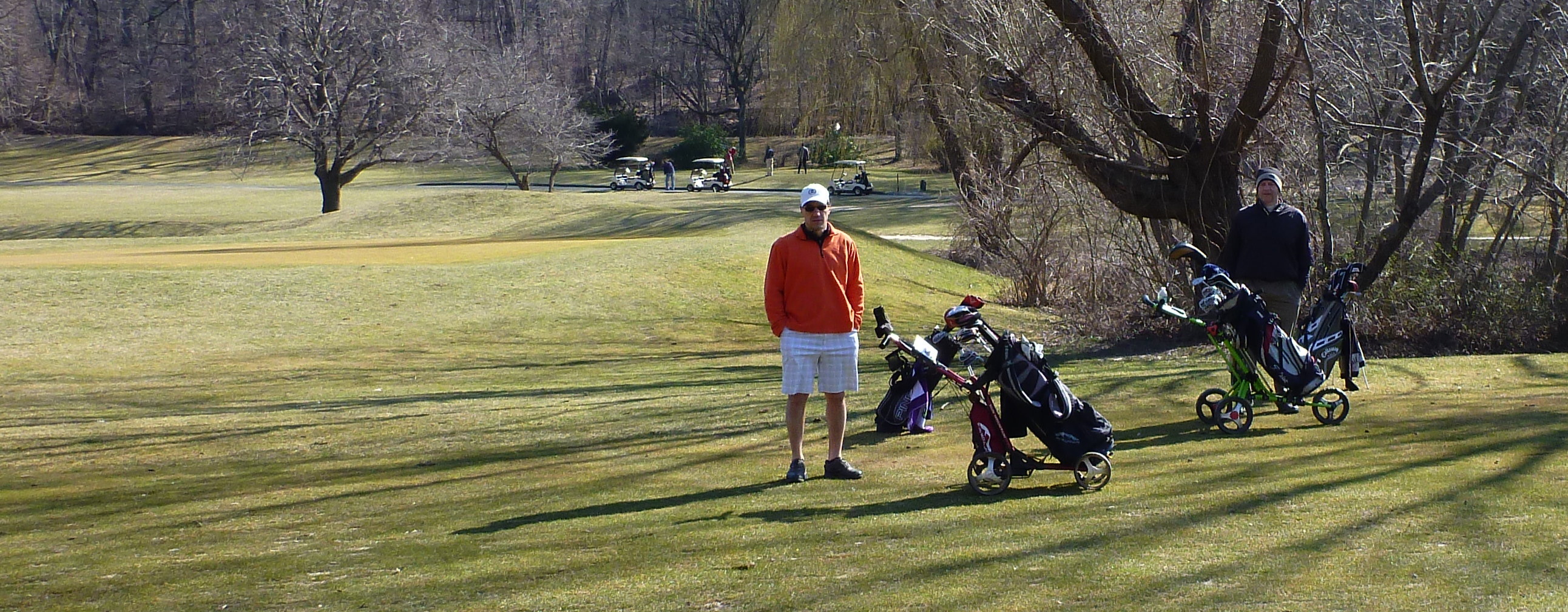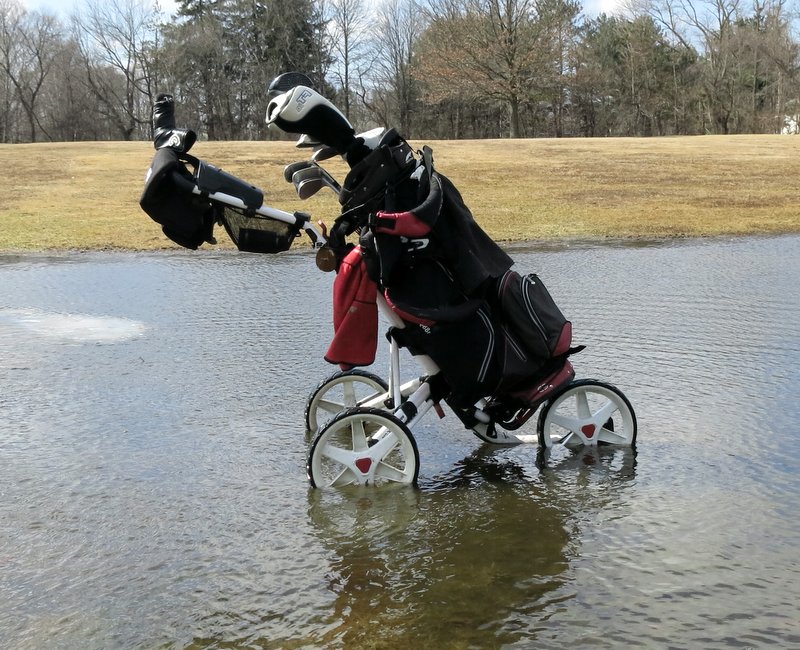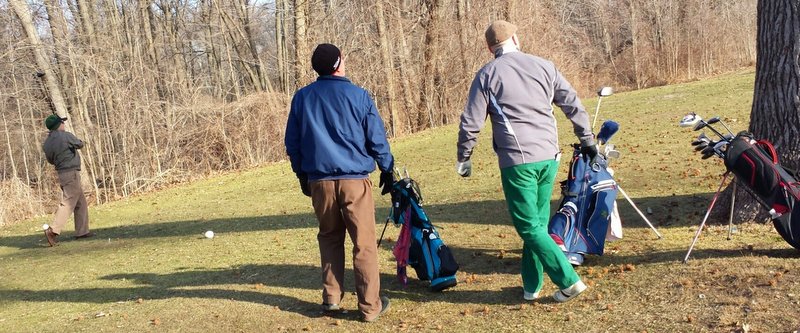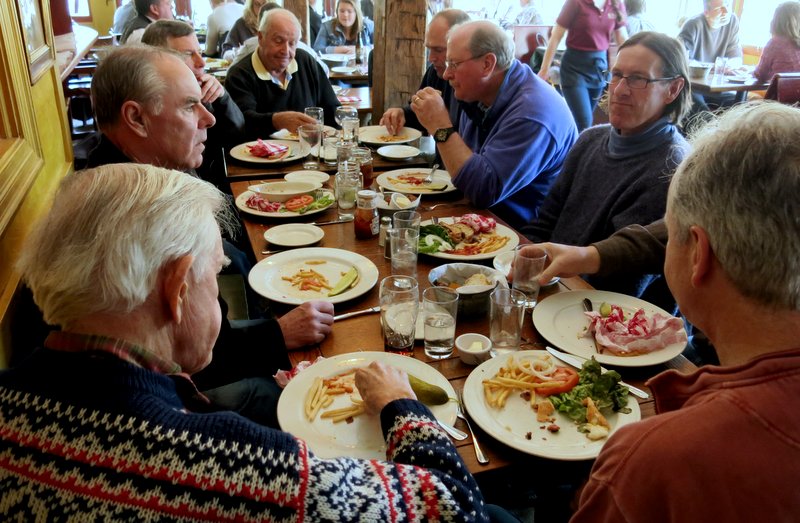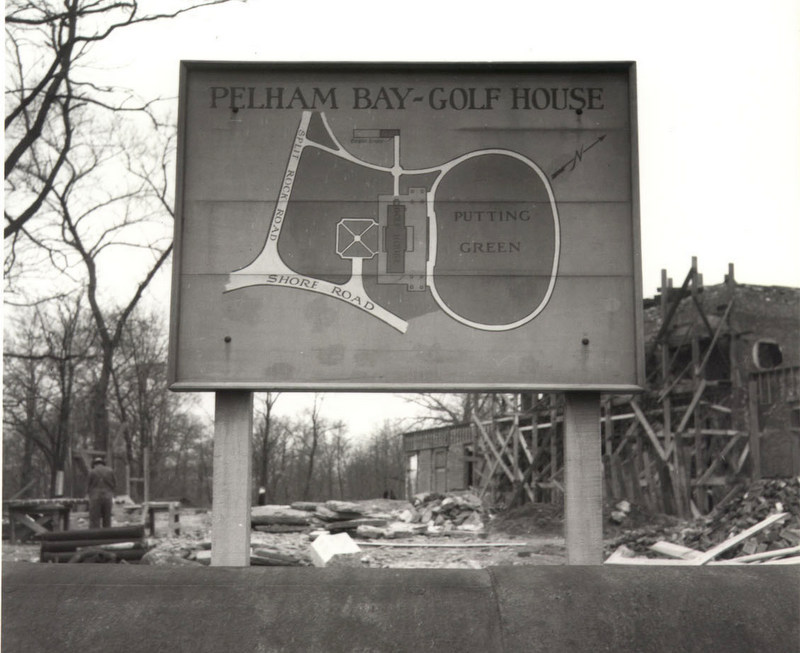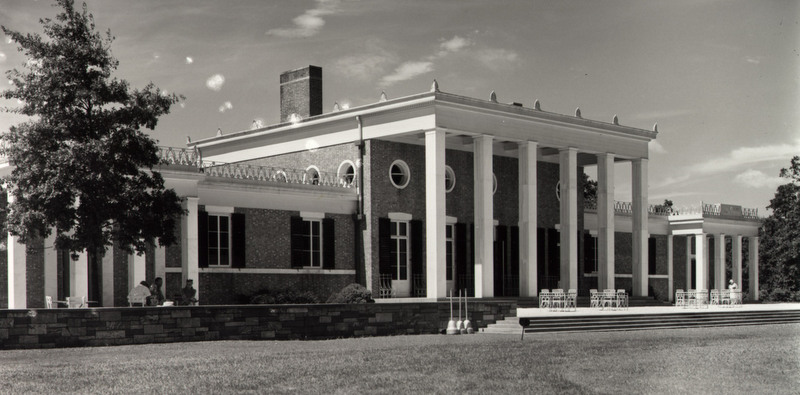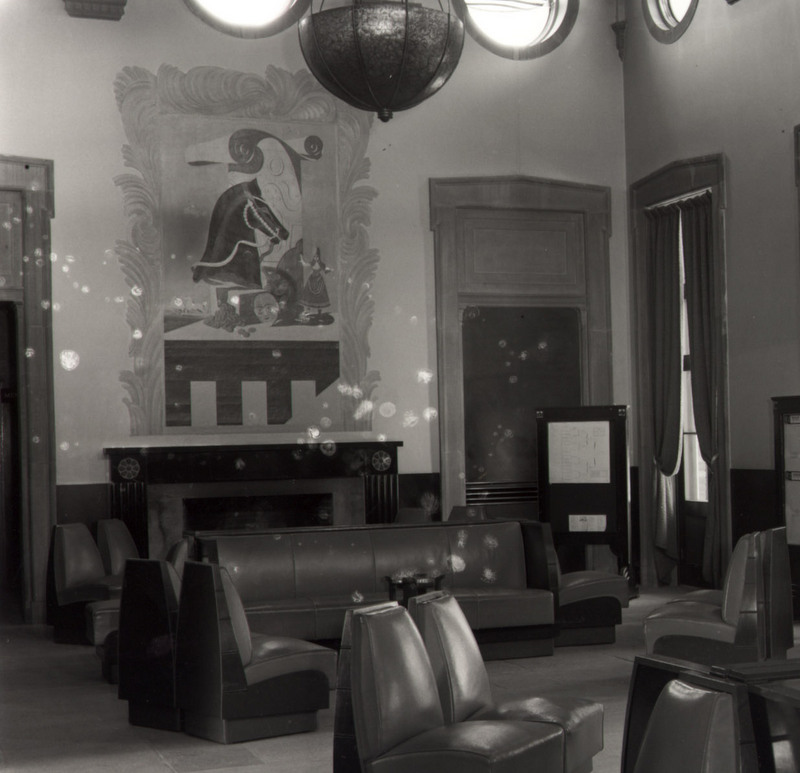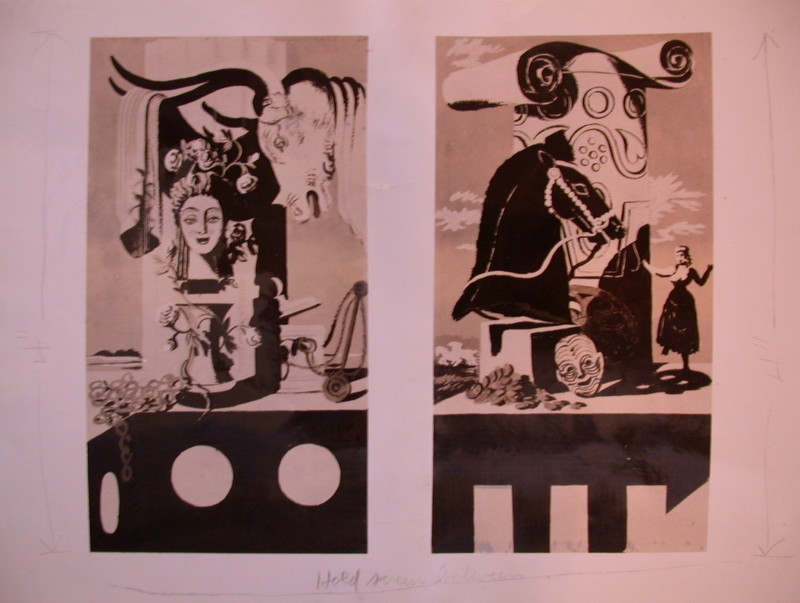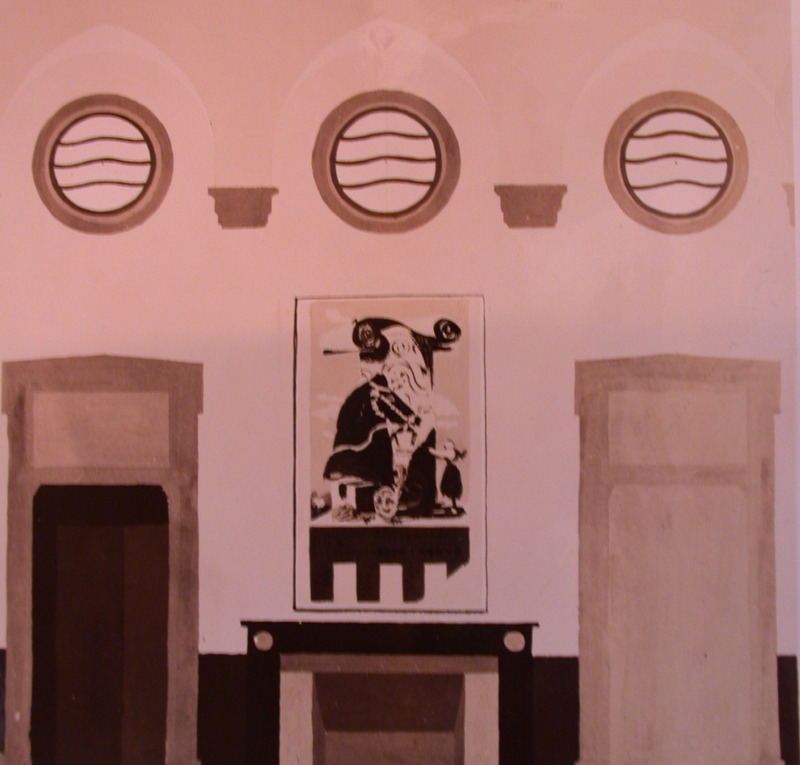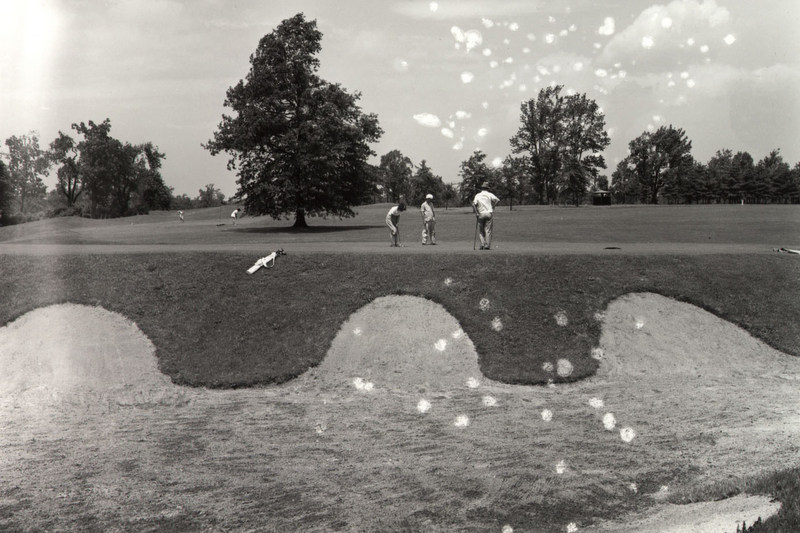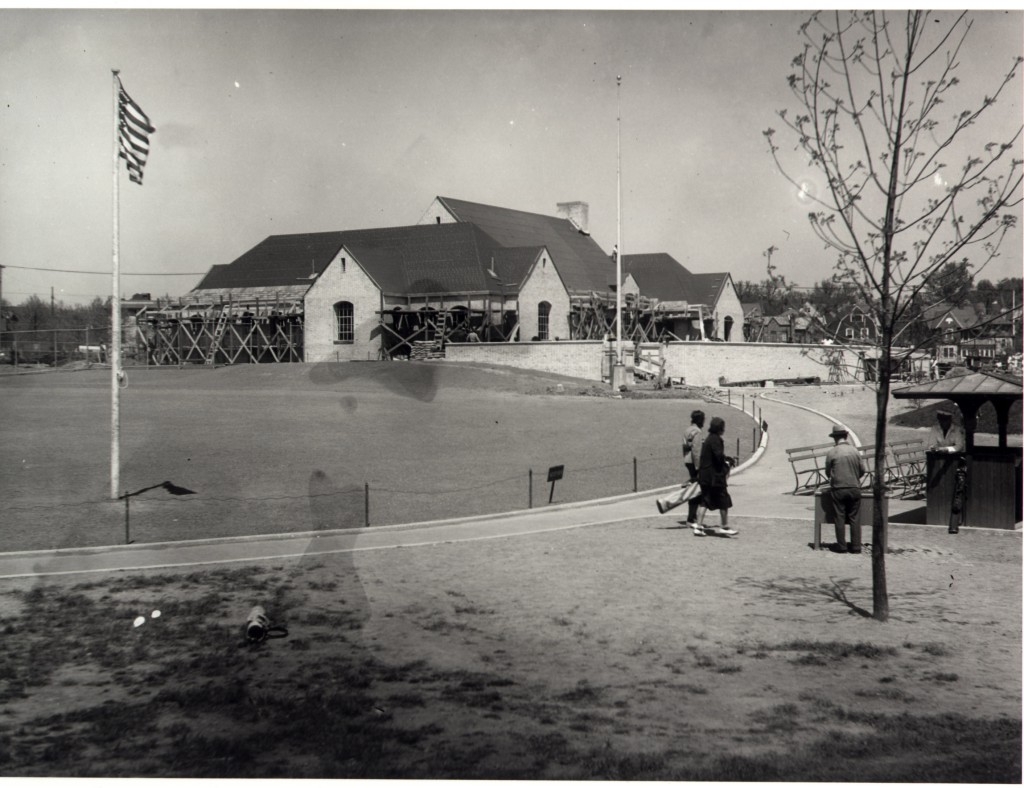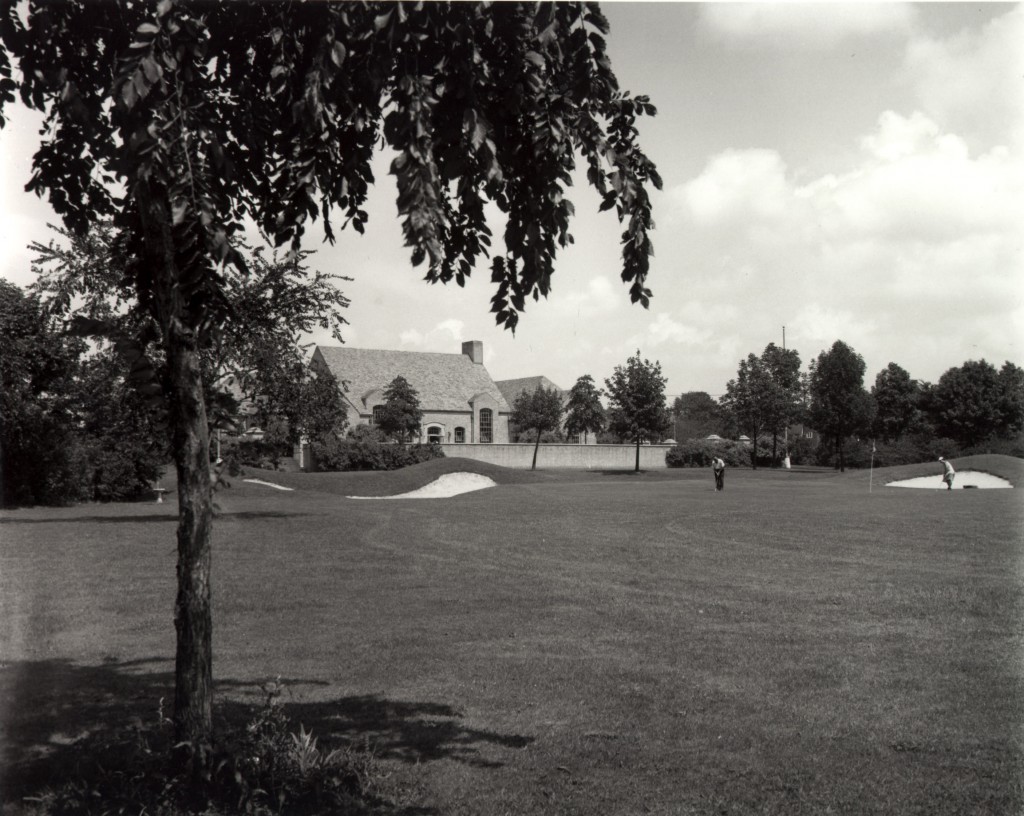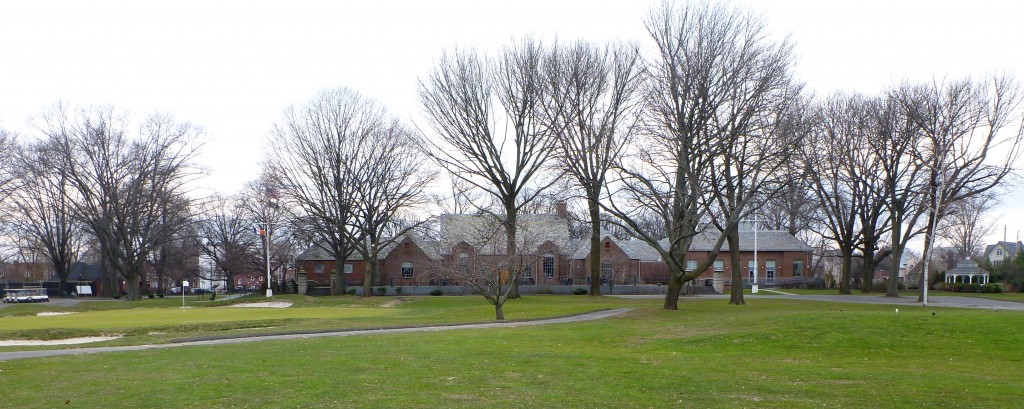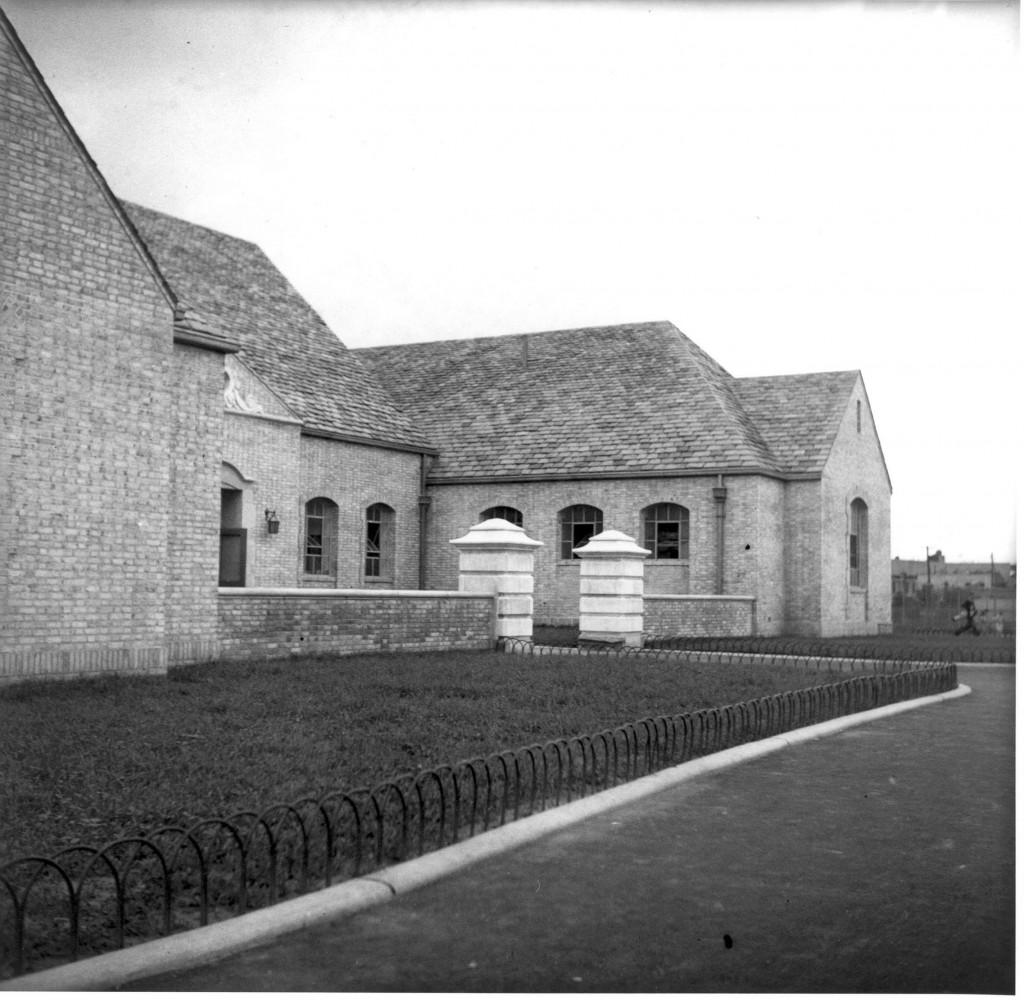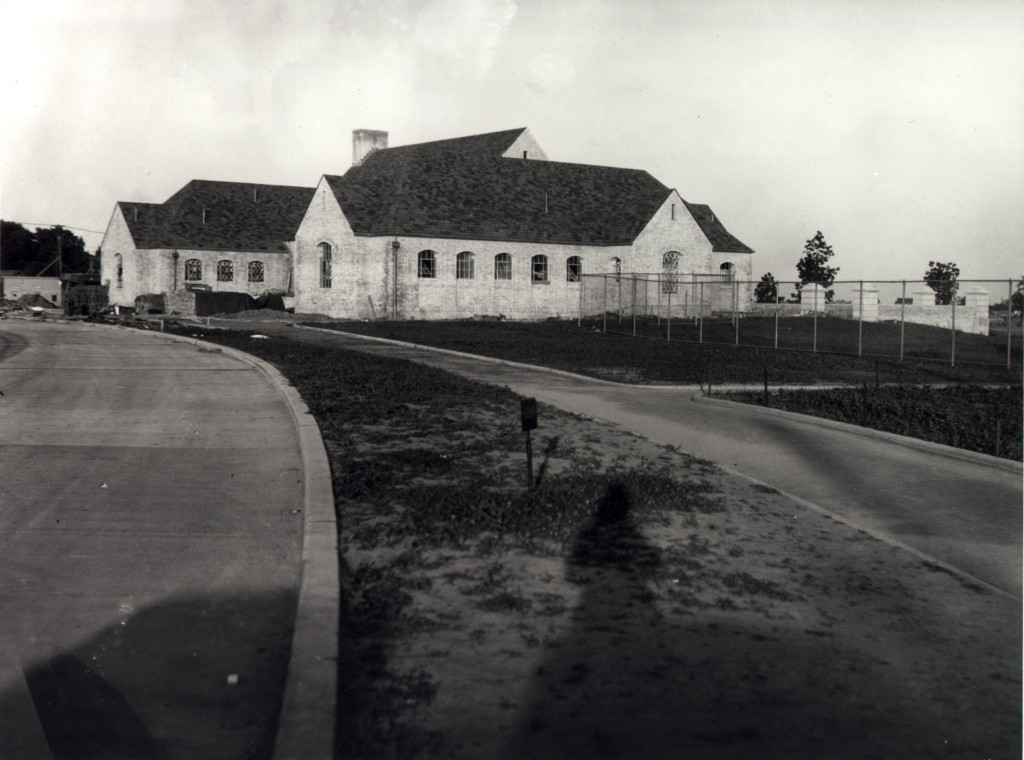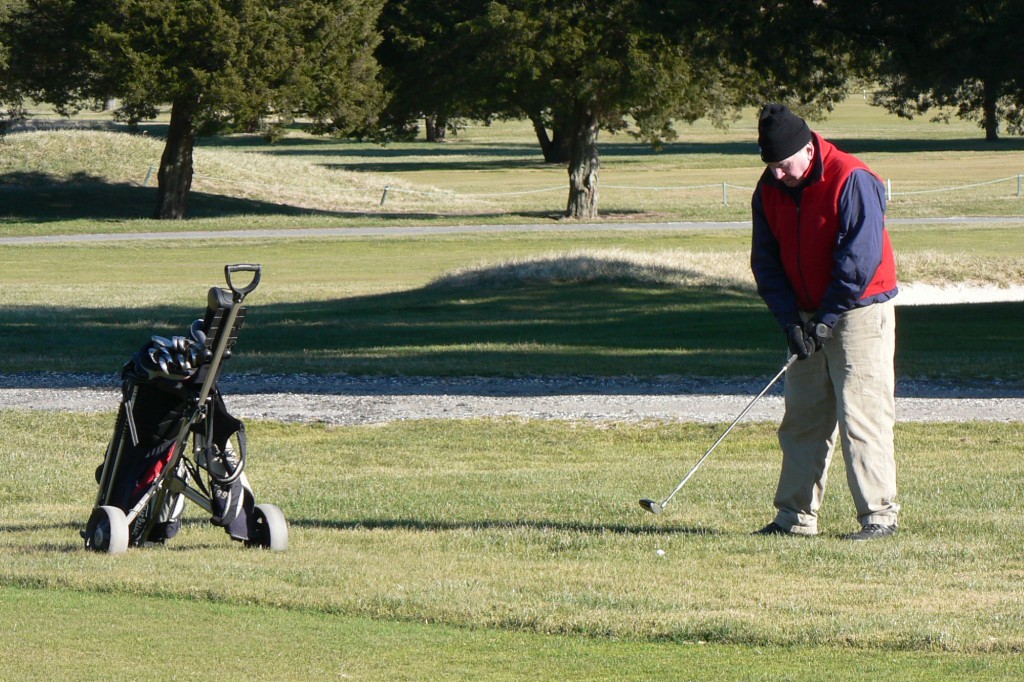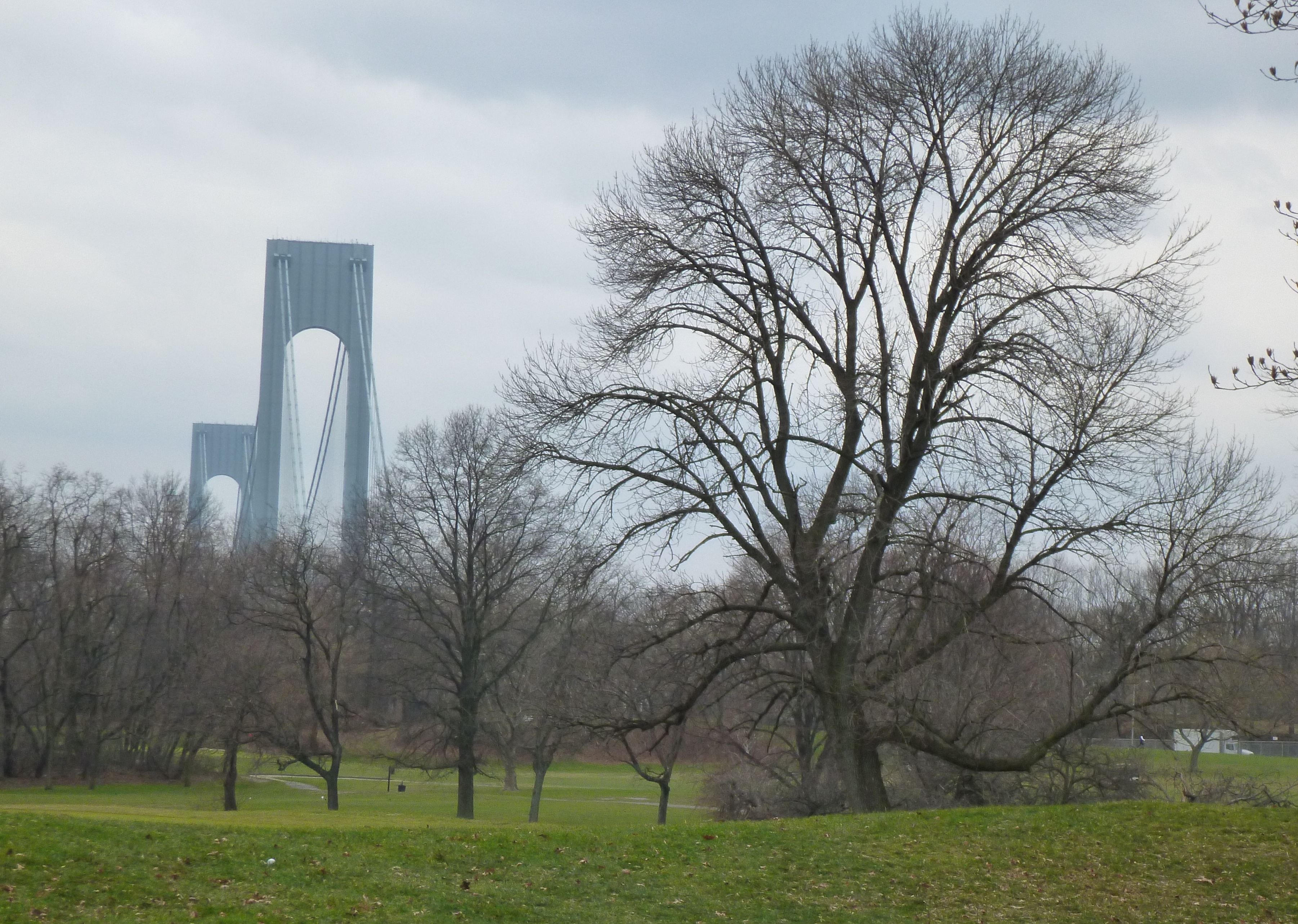
Dyker Beach Golf Course, Brooklyn, New York, January 1, 2013. That’s the Verrazano-Narrows Bridge in the background. There are good municipal golf courses on the other end of it, too (in Staten Island).
For the past six years, my friends and I have played golf on either New Year’s Day or New Year’s Eve—usually in New York City, which seldom gets much snow. On January 1, 2008, we played at Dyker Beach Golf Course, in Brooklyn. In 2009, we had to drive a couple of hours south of the city, to Galloway, New Jersey, to find a course where we could play on grass. One year, we played in the Bronx, on one of the two courses in Pelham Bay Park. In 2012, for the first time, we were able to play on our home course, which didn’t close for the season until the following day.
This year, our home course had closed on Christmas Eve Eve and Pelham Bay still had snow, so we returned to Dyker Beach. Other Gene drove us, in his wife’s car, which has millions of cool features that he doesn’t know how to use. The three guys who sat in the back seat didn’t bother to remove the dog seat cover, which was quilted and was actually sort of comfortable. We saw snow on the way down:
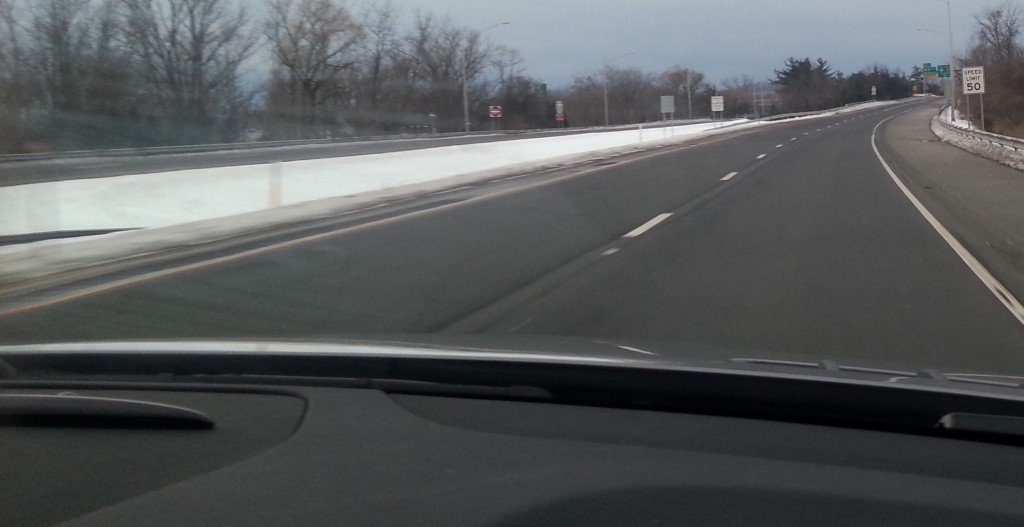
Rt. 7, in Connecticut, on our way to I-84.
We made great time because everyone else in the tri-state area either was still passed out or was trying to treat their hangover. And there was no snow at Dyker, except for this patch, on one of the greens:
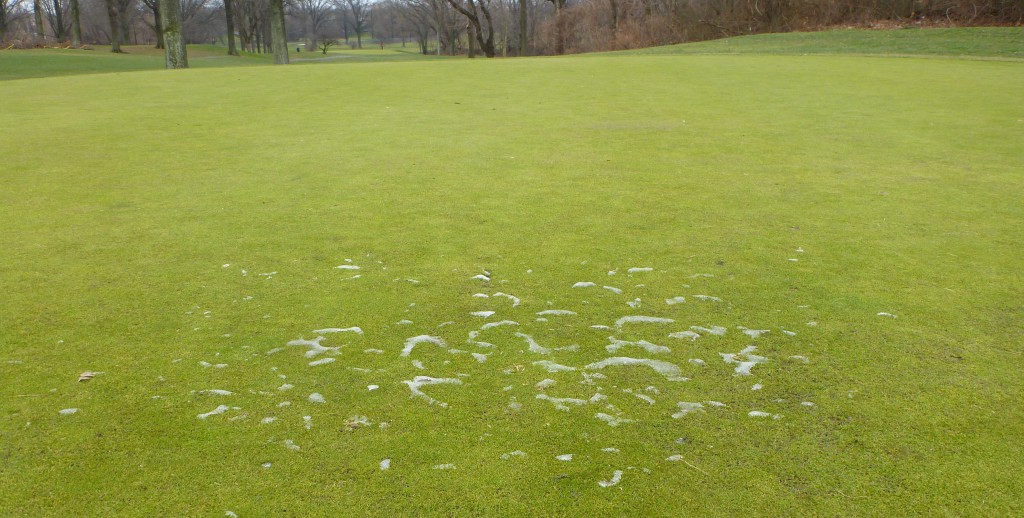
The guy in the golf shop let us play as a fivesome—or, at any rate, he didn’t guess that we were planning to play as a fivesome and therefore didn’t specifically tell us not to. We saw some leftover damage from Hurricane Sandy, but it didn’t affect play:
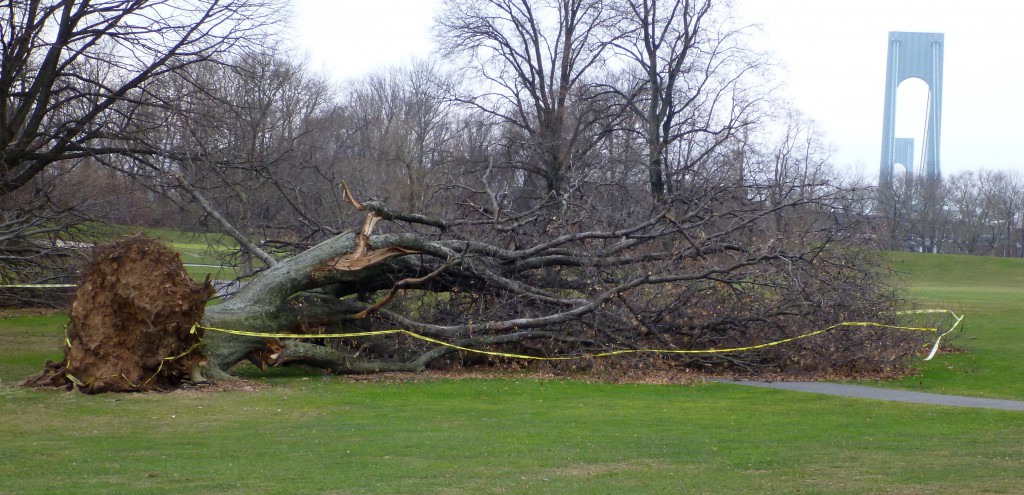
Overall, the course was in terrific shape. Some of the grass was bright green and obviously still growing, and the greens were fast and unfrozen.
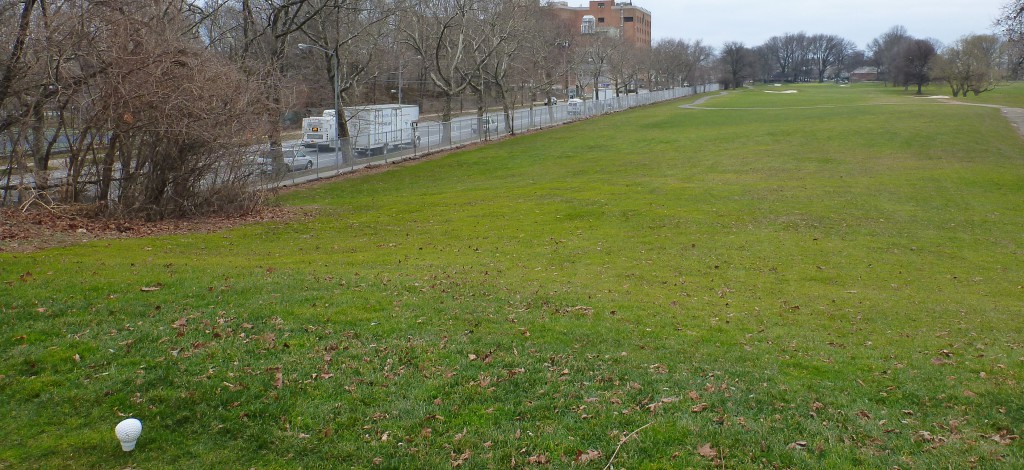
Dyker’s ninth fairway runs parallel, and quite close, to Seventh Avenue in Bay Ridge–a good reason not to park on that block. In fact, you probably shouldn’t walk on that sidewalk, or drive on that street.
Even though there were five of us, we kept pace with the single playing one hole ahead of us and stayed ahead of the single playing one hole behind us (in a cart). We finished in just under three hours.
Gene P., the night before, had warned us in an email that the forecast was for temperatures in the low teens, and he suggested that we consider rescheduling. But he must have been looking at the forecast for Alaska, because the temperature in Brooklyn never got below about 40.

Sixteenth green. We might be interested in buying one of those houses, across the street, and using it as our winter clubhouse.
We played Double Skins, with an added feature that I suddenly thought of on the third hole: Ball Marker Stymies—in which the old Stymie Rule is applied to ball markers rather than balls. That means that if somebody’s ball marker is in your line on a green you have to putt over it or around it. (And you can’t mark your ball with a hockey puck. Each marker—we decided—must be poker-chip-size or smaller.)
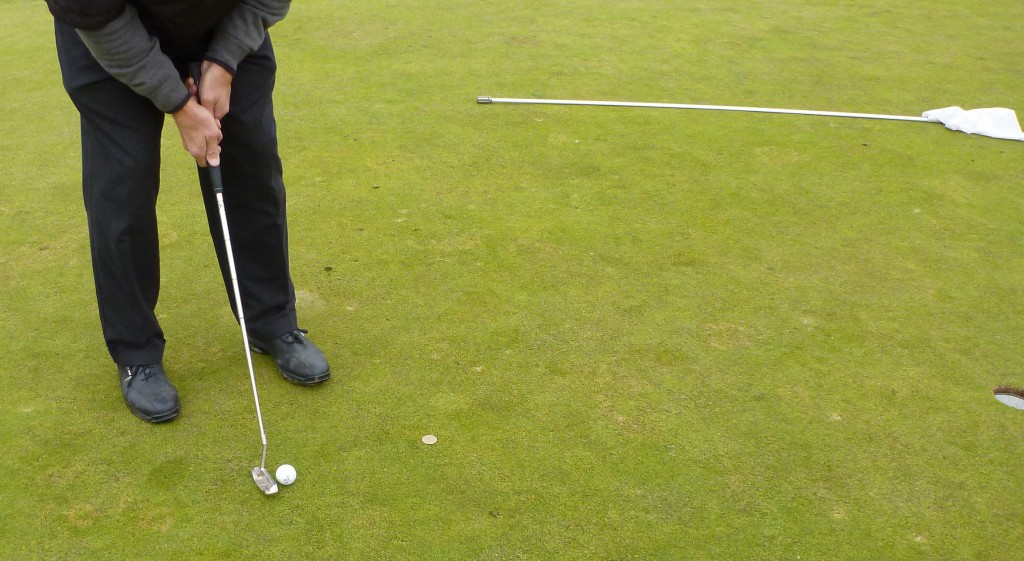
Stymied, on a breaking putt.
After golf, we had lunch at Pipin’s Pub, in Bay Ridge, the home of the famous Pipin Burger (bacon cheeseburger with American cheese). The fries at Pipin’s Pub need work, but we have nothing bad to say about the Pipin Burger. Our waiter took this photograph, despite making it clear that he believed he had better things to do:
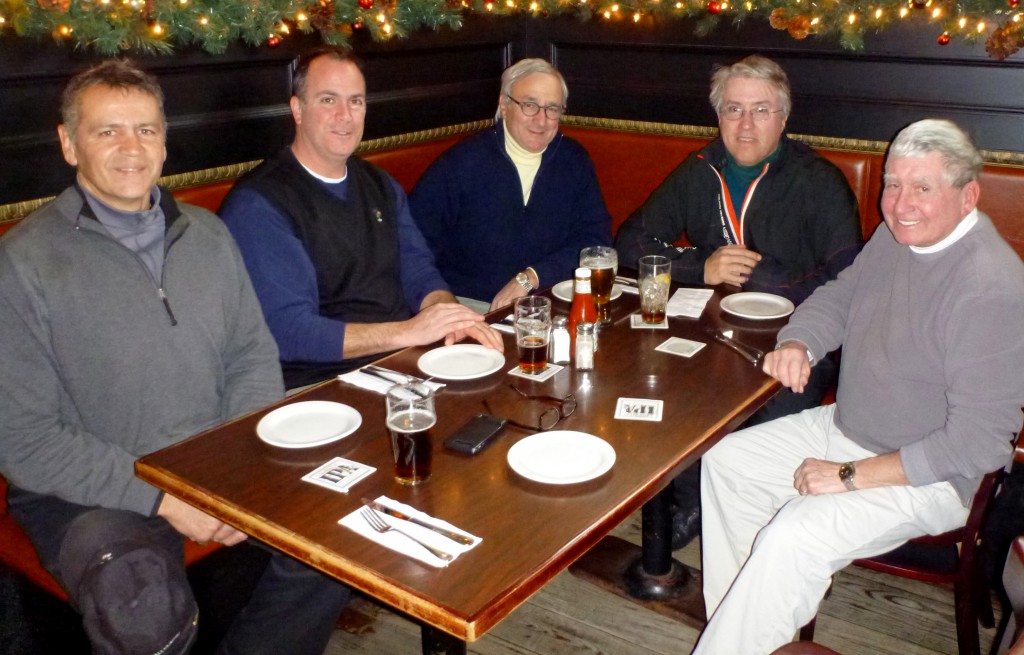
Pipin’s Pub, January 1, 2013.
On New Year’s Day 2008, we had lunch at Pipin’s Pub, too—and at the same table. Here’s proof:
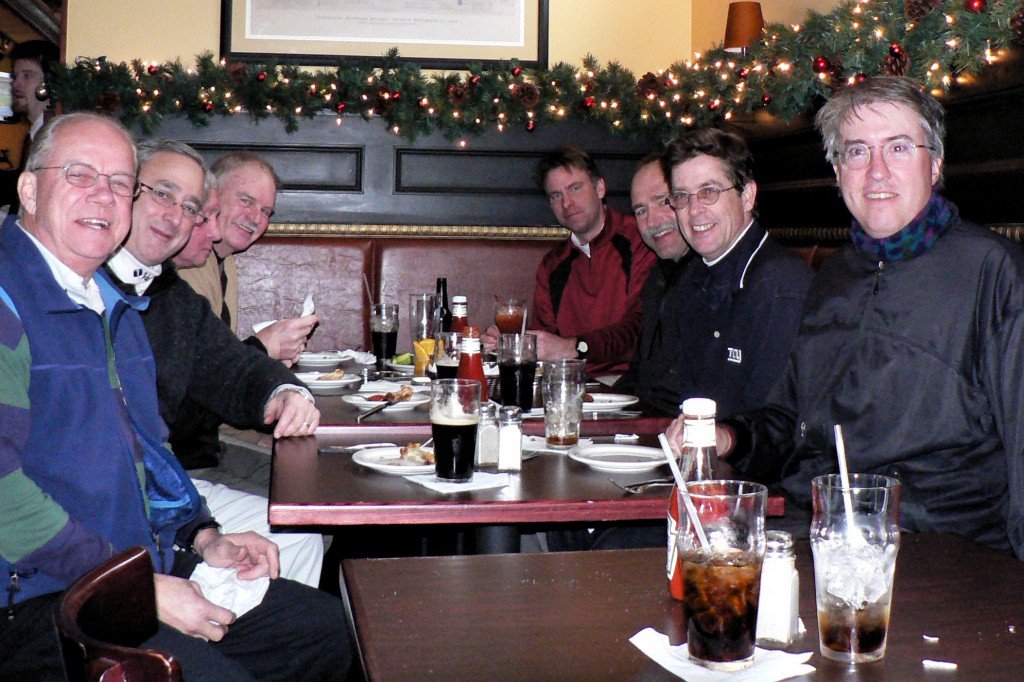
Pipin’s Pub, January 1, 2008.
Happy New Year, and so forth.
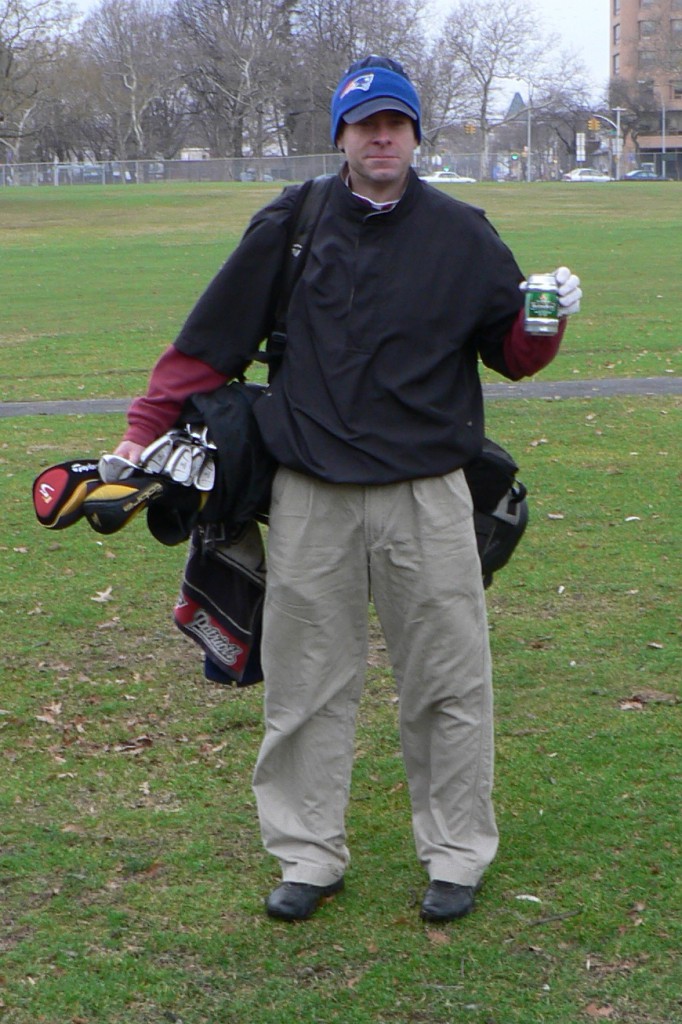
Fritz, Dyker Beach, January 1, 2008.


